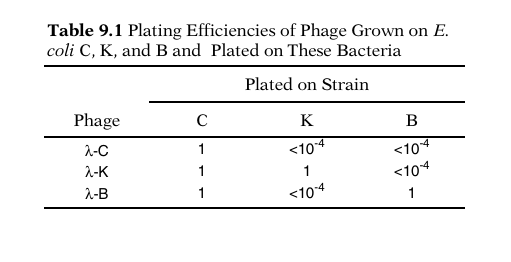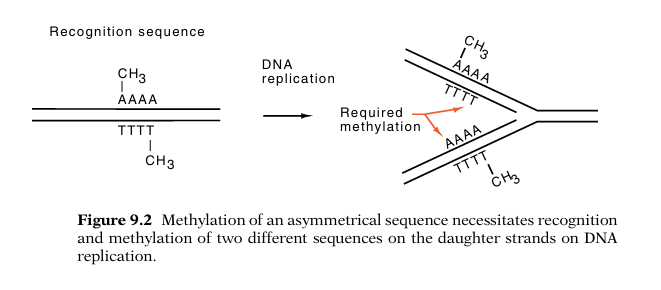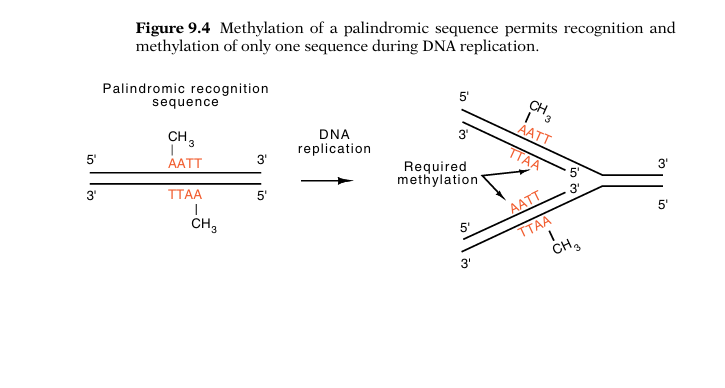

النبات

مواضيع عامة في علم النبات

الجذور - السيقان - الأوراق

النباتات الوعائية واللاوعائية

البذور (مغطاة البذور - عاريات البذور)

الطحالب

النباتات الطبية


الحيوان

مواضيع عامة في علم الحيوان

علم التشريح

التنوع الإحيائي

البايلوجيا الخلوية


الأحياء المجهرية

البكتيريا

الفطريات

الطفيليات

الفايروسات


علم الأمراض

الاورام

الامراض الوراثية

الامراض المناعية

الامراض المدارية

اضطرابات الدورة الدموية

مواضيع عامة في علم الامراض

الحشرات


التقانة الإحيائية

مواضيع عامة في التقانة الإحيائية


التقنية الحيوية المكروبية

التقنية الحيوية والميكروبات

الفعاليات الحيوية

وراثة الاحياء المجهرية

تصنيف الاحياء المجهرية

الاحياء المجهرية في الطبيعة

أيض الاجهاد

التقنية الحيوية والبيئة

التقنية الحيوية والطب

التقنية الحيوية والزراعة

التقنية الحيوية والصناعة

التقنية الحيوية والطاقة

البحار والطحالب الصغيرة

عزل البروتين

هندسة الجينات


التقنية الحياتية النانوية

مفاهيم التقنية الحيوية النانوية

التراكيب النانوية والمجاهر المستخدمة في رؤيتها

تصنيع وتخليق المواد النانوية

تطبيقات التقنية النانوية والحيوية النانوية

الرقائق والمتحسسات الحيوية

المصفوفات المجهرية وحاسوب الدنا

اللقاحات

البيئة والتلوث


علم الأجنة

اعضاء التكاثر وتشكل الاعراس

الاخصاب

التشطر

العصيبة وتشكل الجسيدات

تشكل اللواحق الجنينية

تكون المعيدة وظهور الطبقات الجنينية

مقدمة لعلم الاجنة


الأحياء الجزيئي

مواضيع عامة في الاحياء الجزيئي


علم وظائف الأعضاء


الغدد

مواضيع عامة في الغدد

الغدد الصم و هرموناتها

الجسم تحت السريري

الغدة النخامية

الغدة الكظرية

الغدة التناسلية

الغدة الدرقية والجار الدرقية

الغدة البنكرياسية

الغدة الصنوبرية

مواضيع عامة في علم وظائف الاعضاء

الخلية الحيوانية

الجهاز العصبي

أعضاء الحس

الجهاز العضلي

السوائل الجسمية

الجهاز الدوري والليمف

الجهاز التنفسي

الجهاز الهضمي

الجهاز البولي


المضادات الميكروبية

مواضيع عامة في المضادات الميكروبية

مضادات البكتيريا

مضادات الفطريات

مضادات الطفيليات

مضادات الفايروسات

علم الخلية

الوراثة

الأحياء العامة

المناعة

التحليلات المرضية

الكيمياء الحيوية

مواضيع متنوعة أخرى

الانزيمات
The Biology of Restriction Enzymes
المؤلف:
Robert Schleif
المصدر:
Genetics and Molecular Biology
الجزء والصفحة:
2nd Edition , p268-271
2025-01-06
1303
In this section we digress into the biology of restriction enzymes and then return to their use in cutting DNA. A large number of enzymes have now been found that cut DNA at specific sites. For the most part the enzymes come from bacteria. These enzymes are called restriction enzymes because in the few cases that have been carefully studied, the DNA cleaving enzyme is part of the cell's restriction-modification system.
The phenomenon of restriction-modification in bacteria is a small- scale immune system for protection from infection by foreign DNA. In contrast to higher organisms in which identification and inactivation of invading parasites, bacteria, or viruses can be performed extracellularly, bacteria can protect themselves only after foreign DNA has entered their cytoplasm. For this protection, many bacteria specifically mark their own DNA by methylating bases on particular sequences with modifying enzymes. DNA that is recognized as foreign by its lack of methyl groups on these same sequences is cleaved by the restriction enzymes and then degraded by exonucleases to nucleotides. Less than one phage out of 104 wrongly methylated infecting phage is able to grow and lyse an E. coli protected by some restriction-modification systems. Bacteria further protect themselves from plant and animal DNA. Much plant and animal DNA is methylated on the cytosine in CpG sequences. Many strains of bacteria also contain enzymes that cleave DNA when it is methylated on specific positions.
Arber studied restriction of lambda phage in E. coli and found that E. coli strain C does not contain a restriction-modification system. Strain B has one restriction-modification system, and yet a different one recognizes and methylates a different nucleotide sequence in strain K-12. Phage P1 also specifies a restriction-modification system of its own, and this can be superimposed on the restriction-modification system of a host in which it is a lysogen.


Let the notation λ-C represent lambda phage that has been grown on E. coli strain C. Infection of strains B, K-12, and C with λ grown on the various strains yields different efficiencies of plaque formation (Table 9.1). Passage of the phage through a host of one type modifies the DNA so that it is recognized as "self" and plates at high efficiency if the phage reinfects that same strain. It is recognized as "foreign" and plates at low efficiency if the phage infects a strain with a different restriction-modification system.
Possession of a restriction-modification system introduces complexities to the process of DNA replication. Imagine that the double-stranded DNA contains methyl groups on both strands of the DNA at a recognition sequence. DNA replication creates a new duplex in which one of the strands in each of the daughter duplexes at first lacks the modification . This half-methylated DNA must not be recognized as foreign DNA and cleaved, but instead must be recognized as "self" and methylated (Fig. 9.2). Therefore, the restriction-modification system functions like a microcomputer, recognizing three different states of methylation of its recognition sequence and taking one of three different actions. If the sequence is unmethylated, the enzymes cleave. If the DNA is methylated on one of the two strands, the modification system methylates the other strand; if the DNA is methylated on both strands, the enzymes do nothing.
A palindromic recognition sequence streamlines operation of the restriction-modification system. A palindrome is a sequence that reads the same forward and backward, such as repaper and radar. Because DNA strands possess a direction, we consider a DNA sequence to be palindromic if it is identical when read 5' to 3' on the top strand and on the bottom strand (Fig. 9.3). Palindromes, of course, can be of any size, but most that are utilized as restriction-modification recognition sequences are four, five, six, and rarely, eight bases long. By virtue of the properties of palindromes, both daughter duplexes of replicated palindromic sequences are identical, and thus the modification enzyme needs to recognize and methylate only one type of substrate (Fig. 9.4). As we already saw in Fig. 9.2, the use of nonpalindromic recognition sequences would require that the modification enzyme recognize two

different sequences. Presumably dimeric proteins are used to recognize the palindromic sequences. Restriction enzymes are divided into three main classes. The enzymes in class I form a complex consisting of a cleaving subunit, a methylating subunit, and a sequence recognition subunit. These enzymes cleave at sites far distant from their recognition sequences and will not be further discussed here even though they were the first to be discovered. Those in class II possess their sequence recognition and cleaving activities together. They cleave in or near their recognition sequence and are of the most use in genetic engineering. The class III enzymes possess a cleavage subunit associated with a recognition and methylation subunit. These cleave near their recognition site.
A restriction enzyme within a cell is a time bomb because physical- chemical principles limit the enzyme's specificity for binding. If a restriction enzyme were to bind to a wrong sequence, and a typical bacterium contains about 4 × 106 such sequences, most likely the sequence would not be methylated and the enzyme could cleave. This would break the chromosome, and the cell would die. The experimental observation, however, is that cells containing restriction enzymes do not noticeably die any faster than cells without restriction enzymes. How, then, is the extraordinarily high specificity of the restriction enzymes generated?

The requisite high specificity can be obtained if cutting the DNA duplex is a two-step process. An enzyme could bind to the recognition sequence, cleave one strand, wait a while, then cleave the other strand. This has the effect of utilizing the recognition sequence twice for each cleavage. If the enzyme binds at a site other than the recognition sequence, it rapidly dissociates before cleaving the second strand. Therefore, restriction enzymes are likely to produce nicks in the DNA at sites other than the recognition sequence, but these nicks can be repaired with DNA ligase and the cell will not be harmed in the process. Few restriction enzymes are likely to be found that cleave both strands of the DNA at an incorrect site in a concerted process.
 الاكثر قراءة في مواضيع عامة في التقانة الإحيائية
الاكثر قراءة في مواضيع عامة في التقانة الإحيائية
 اخر الاخبار
اخر الاخبار
اخبار العتبة العباسية المقدسة

الآخبار الصحية















 قسم الشؤون الفكرية يصدر كتاباً يوثق تاريخ السدانة في العتبة العباسية المقدسة
قسم الشؤون الفكرية يصدر كتاباً يوثق تاريخ السدانة في العتبة العباسية المقدسة "المهمة".. إصدار قصصي يوثّق القصص الفائزة في مسابقة فتوى الدفاع المقدسة للقصة القصيرة
"المهمة".. إصدار قصصي يوثّق القصص الفائزة في مسابقة فتوى الدفاع المقدسة للقصة القصيرة (نوافذ).. إصدار أدبي يوثق القصص الفائزة في مسابقة الإمام العسكري (عليه السلام)
(نوافذ).. إصدار أدبي يوثق القصص الفائزة في مسابقة الإمام العسكري (عليه السلام)


















